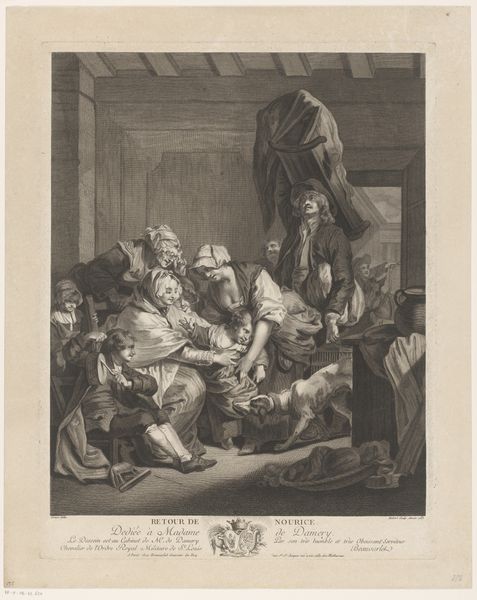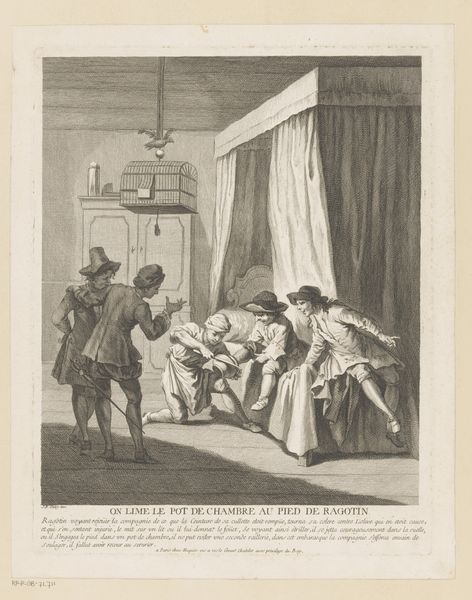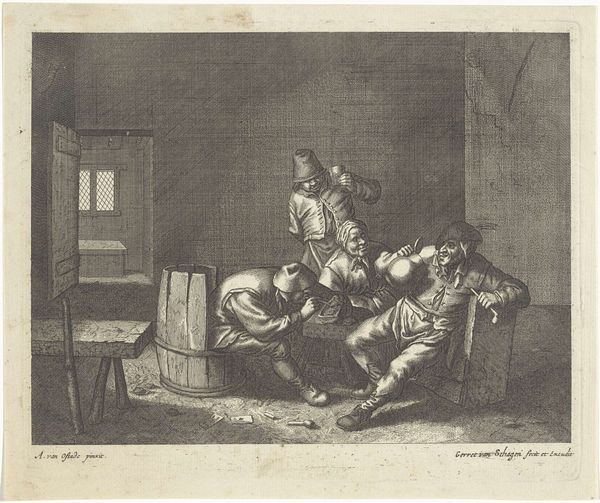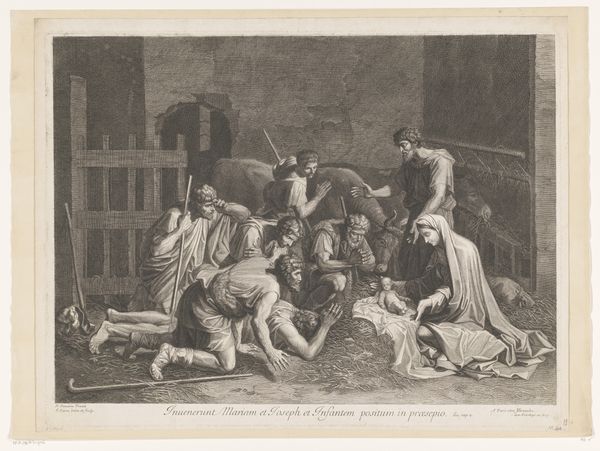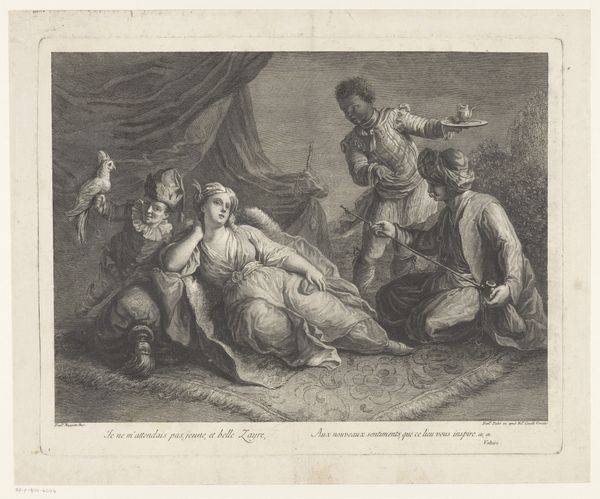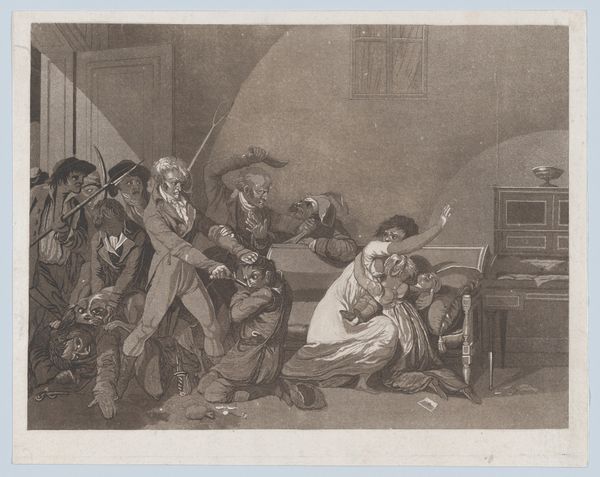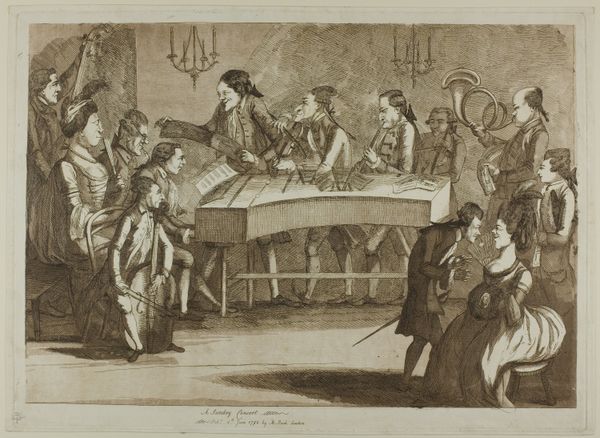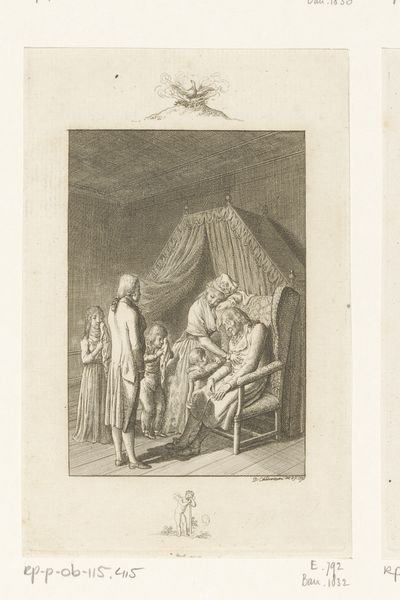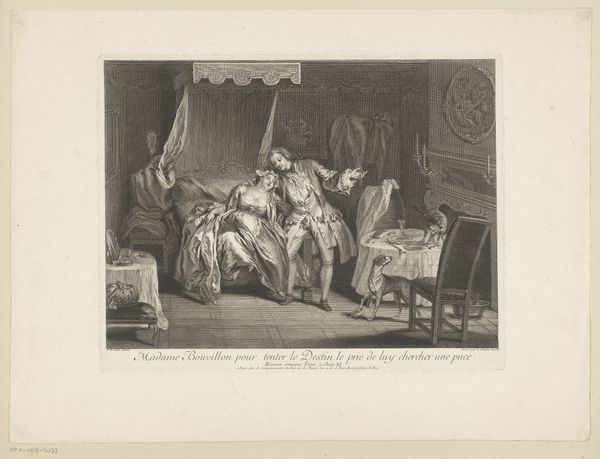
print, engraving
#
baroque
# print
#
figuration
#
history-painting
#
engraving
Dimensions: plate: 12.4 x 16.1 cm (4 7/8 x 6 5/16 in.) sheet: 13.3 x 17.7 cm (5 1/4 x 6 15/16 in.)
Copyright: National Gallery of Art: CC0 1.0
Editor: This is "The Death of Cato," an engraving made in 1634 by Willem Basse. The stark contrast between light and shadow really jumps out; it's quite dramatic. What formal elements do you see as particularly important in understanding this print? Curator: The linear precision achieved through engraving demands our immediate attention. Observe how Basse manipulates line weight and density to articulate form and depth. Notice the cross-hatching in the darker areas to build tone, effectively rendering the dramatic lighting. Editor: It's fascinating how he creates so much depth with just lines. Can you explain how the composition contributes to the overall effect? Curator: Indeed. The arrangement of figures directs the viewer’s eye to Cato, who is situated in the foreground. Basse deliberately places figures behind Cato as a chorus reacting to his actions. Are there particular aspects of these figures that strike you? Editor: The figure on the left has their arms open like they’re helpless. But they're far from Cato, near the top edge of the image. What does that asymmetry accomplish? Curator: Precisely! By disrupting a strict symmetrical balance, Basse generates visual tension. That asymmetry mirrors Cato’s own internal conflict. Formally, the visual disruptions underscore the subject’s turmoil and the wider theme of disruption in history. What's your take on Basse's decisions here? Editor: The lighting, figures, and form come together to deliver its story so effectively, even if the image is stark. The level of detail Basse captured is incredible. Curator: Agreed. It underscores how even a limited palette, used deliberately, can create a compelling and emotionally charged narrative. The formal techniques reinforce that central message of historical and personal upheaval.
Comments
No comments
Be the first to comment and join the conversation on the ultimate creative platform.
